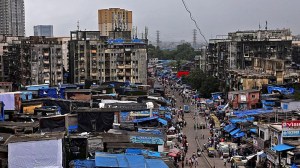Stay updated with the latest - Click here to follow us on Instagram
Damage Control
In a makeshift studio at The Taj Mahal Palace and Tower in Mumbai,art restorer Priya Khanna is painstakingly working on an MF Husain canvas.
In a makeshift studio at The Taj Mahal Palace and Tower in Mumbai,art restorer Priya Khanna is painstakingly working on an MF Husain canvas. This oil painting from the 1960s was collateral damage of 26/11. When the hotel was engulfed in flames and gallons of water were hosed down to douse them,the precious paint on a narrow strip of the canvas came off. The water loosened the base below the paint, says Khanna,The work had to be cleaned and consolidated before we refilled it with the original colours. The Delhi-based restorer has been working on this particular Husain canvas for over six weeks now.
Over the past year,more than 100 works from the Taj collection that suffered damage have been restored,but there are several more to go. The art in the hotels heritage wing was the worst affected, says Mortimer Chatterjee,partner of the Mumbai gallery Chatterjee and Lal,who has been curating art at the Taj since 2002.
The Taj Mumbai has a formidable collection of modern and contemporary art,including works by the Indian masters from the 1960s and the 70s,as well as rare Bastar art. Even as restoration work was progressing,Chatterjee commissioned some new works for the hotel. So when The Harbour Bar opened earlier this month,it had on display Rajesh Pullarwars acrylic on wood,while Japanese restaurant Wasabi has a work by Sadanand Shirke.
Some works seem beyond repair,but 41-year-old Khanna who set up her studio in Delhi in 1998 and has in the past restored works by Raja Ravi Varma,Jamini Roy and FN Souza is hopeful that most will be restored to their original glory. Khanna travels from Delhi to Mumbai every fortnight and works with a team of four artists who are experts in restoration. The level of damage is different for each canvas. In some cases,the smoke coated the paintings surface with soot. In others,the water made the canvas damp,resulting in mould, says Khanna.
The Taj,thankfully,has many photographs of its paintings and these are helping Khanna and her team along. They are also busy taking pictures and cataloguing the restoration process. Photographs of each work,taken before,during and after the restoration,will be handed to the hotel, she says. While the large canvases are worked upon in Mumbai itself,she usually lugs the etchings to Delhi. Itll speed up the process, she says. Chatterjee is tight-lipped about the cost incurred,but says there is no deadline: Restoration is a continuous process.







